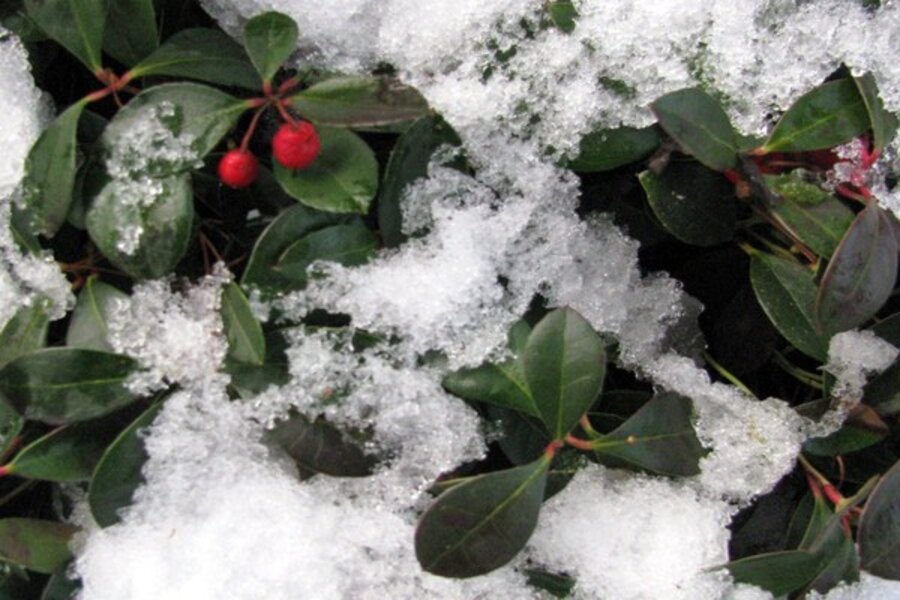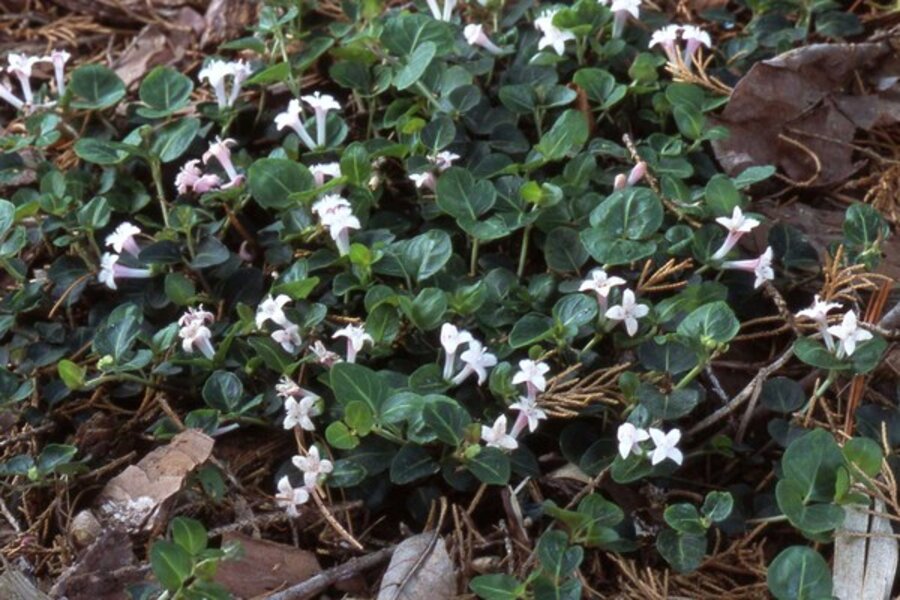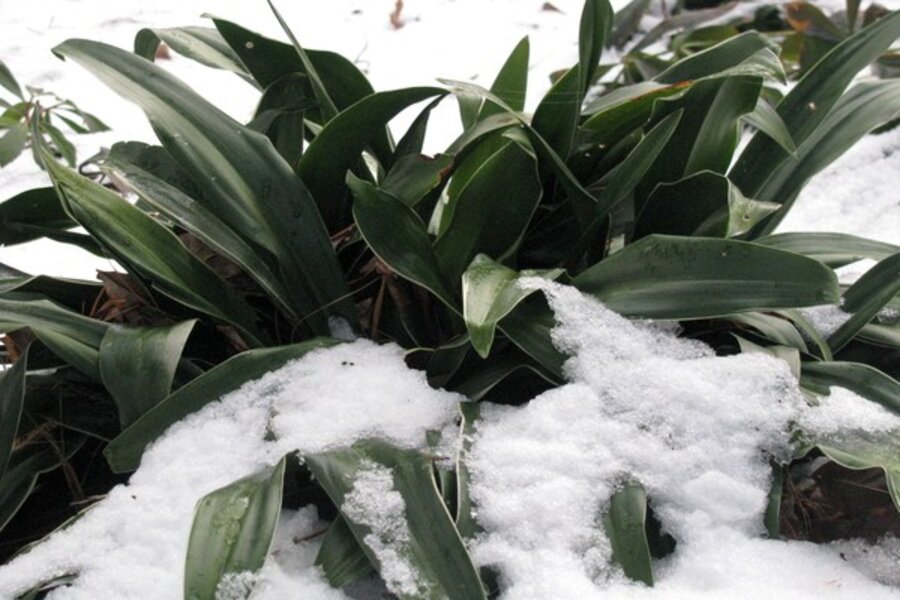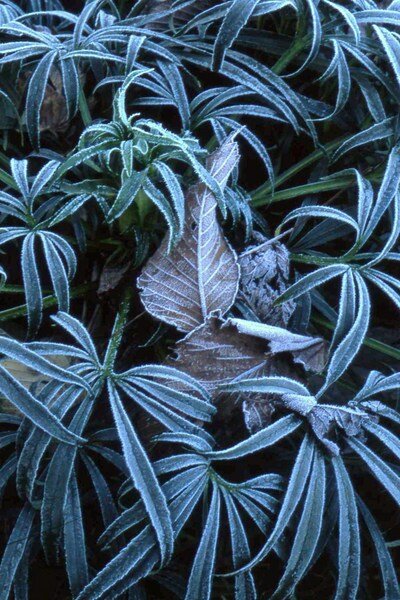Evergreen perennials: Green in the winter garden
Loading...
That great modern philosopher, Kermit the Frog of Muppet fame, reminds us that it is not easy being green. That's especially true in a Midwest garden during winter.
Nature points out how difficult it is to be green in winter by absence of the color. I garden where primarily an Eastern deciduous forest habitat existed. If not covered by snow, the dominant color is some shade of brown.
Perennials must survive temperature fluctuations
While our temperatures are normally not all that severe, they do make fast and sudden changes. We have highs of 20s F. and 30s F. this week, and next week it's in the 50s F. and 60s F.
It's hard for a plant to exist above ground if its roots are frozen and the winter wind is pulling moisture from anything with its nose exposed. Snow cover acting as a protective blanket is unreliable as snows seldom last for long.
With all this fluctuation in temperatures, it can be difficult to know your hardiness zone, but a quick check can establish a guideline for averages when selecting plants for your winter garden.
Five great perennials for winter
I have five favorites that I know will be there for me, relieving my wintertime cabin fever.
Unlike the garden hybrid hellebores that most gardeners are familiar with, Helleborus foetidus, or bearpaw hellebore [see photo at left above], does not have colorful blooms in the traditional sense. But its green bell-shaped blooms certainly satisfy me when they begin forming in mid-December, opening in mid- to late February.
This species is a study in green as previous year's foliage turns deep olive-green while the bloom stem rises from that color in chartreuse-green, and bell rims sometimes have touches of rusty red. Two feet or so in height, with a spread of three to four feet, it is a green beacon in the winter garden.
Gaultheria procumbens, or creeping wintergreen [see first photo above], is the Currier and Ives holiday card of the winter garden. Only six to eight inches in height, it scampers about forming mats of highly polished green leatherlike leaves. No matter the weather, the foliage always looks as though elves came out each evening to wax and buff each individual leaf.
Urn-shaped blooms are white to pink in June, turning to scarlet red berries in late fall, lasting all through winter. Dust lightly with frost or snow and you have a holiday card. Oh, you can also chew the leaves and berries for fresher breath.
Mitchella repens, or partridgeberry [see second photo at top], has a place of honor in my shade garden. Near a garden bench under mature cedars is a raised bed. In this bed are deciduous azaleas with partridgeberry beneath painting the mulch green as it spills across and over log edges of the bed.
All is tiny about this creeper. Leaves are smaller than your pinky fingernail, deep glossy green with a prominent vein down the middle. Twin trumpets of white turn to red berries in late fall. Trumpet blooms are joined at the base, so each berry will have two bellybuttons. It's a great ground cover for small bulbs such as trout lilies (Erythronium species) or Jack-in-the-Pulpit (Arisaema triphyllum).
Camptosorus rizophyllus, or walking fern, is my favorite fern. I keep tucking it throughout the gardens. Thus far it resides alongside and upon stones forming my water feature. It is now creeping across a nurse log and on the side of a rotting stump. Any place moss will grow, walking ferns will grow.
The common name best describes the fern. Tips of fronds touch moss or mulch and anchor themselves to form another clone of themselves. Given time there is a crisscross mat of six-inch ferns hugging their habitat. Snow melts and there they are to green you on a winter walk.
Truly a collector's plant, Rhodea japonica, or sacred lily of China (Japan) [see third photo at top], fills a difficult niche in the shade garden. It actually does best for me in root competition at the base of small trees and shrubs, where it will stay on the well-drained to dry side. Too much moisture and spots form on its leaves.
Foliage is long and straplike, polished deepest green. Leaves grow to about 18 inches in length with a width of 2-1/2 inches. Rhizomes slowly creep forming colonies. The blooms are insignificant, red berries in winter are usually hidden, so the plant is a bit of a "one hand clapping" experience.
-----
Gene Bush, a nationally known garden writer, photographer, lecturer, and nursery owner, gardens on a shaded hillside in southern Indiana. His website is www.munchkinnursery.com. He also writes the Garden Clippin's Newsletter. This is his second post at the Diggin' It blog. You can read the first one here.








